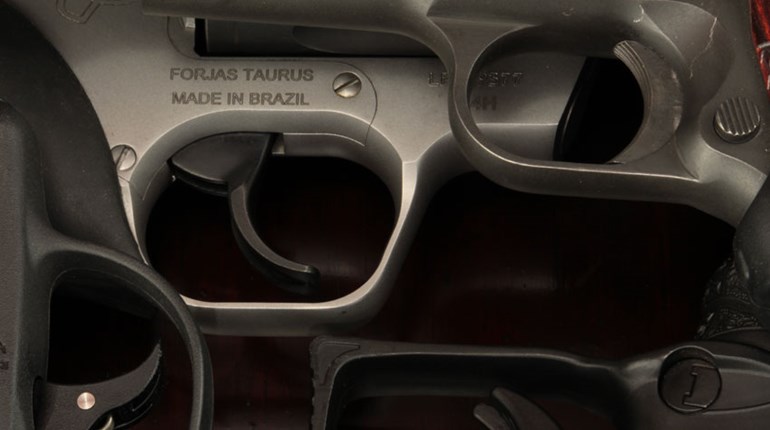
A while back, I wrote a short article stressing the importance of actually focusing on the front sight when using iron sights. One commenter, whom I wish to personally thank, noted that I had not explained why doing so is important. Looking back, it was a critical omission that is important to correct.
Three things make focusing on the front sight a critical part of marksmanship: the geometry of sight alignment, the human eye’s depth of field and what wiggles the most on a firearm. Let’s start with geometry.
The barrel of the firearm points along the same horizontal axis as a line that joins the center of the rear sight with the center of the front sight, if the sights are adjusted properly. Seen from above or below, the bullet’s path and that line (the line of sight) are one line if there is no horizontal force like wind to pull the bullet away. (There are miniscule variations to this that are significant only for precision shooting.) That means that if the sights aren’t aligned on the target, the bullet will miss what the shooter intends to hit. The more they are misaligned, the farther the bullet strike will be from the target. So if your sights are 1 foot apart, a 1/12-inch error at the front sight will multiply to 90/12 or 7.5 inches at 90 feet. You don’t want to be 7.5 inches off at 30 yards.
The rule also means that the longer the distance between the front and rear sights (sight radius), the smaller is the effect of front sight error.
Here are four Glock handguns with different sight radii, and the effect of the same error on the bullet strike for each one.
|
1/16 inch Sight Error at 30 Yards |
||
|
Model |
Sight Radius Inches |
Target Error Inches |
|
Glock 26 |
5.39 |
12.52 |
|
Glock 19 |
6.02 |
11.21 |
|
Glock 17 |
6.49 |
10.40 |
|
Glock 34 |
7.55 |
8.94 |
Rifle sights are, of course, more forgiving than handgun sights, but the problem is still that a small error at the front sight is much greater at the target.
The second factor is how your eye focuses. As with an optical camera, the human eye has a “depth of field.” An easy definition: When you focus on an object, the distance between things in front of and behind that object that are also in acceptable focus is the depth of field. The closer an object is to you, the shorter the depth of field is. That is, if you focus on something a few inches from you, as a rifle’s rear sight, the front sight will not be in focus, and the target will not be in focus.
There are a huge number of variables that affect this, but the principal ones are your eyesight and light conditions. Far-sightedness and near-sightedness, especially uncorrected, affect the distances at which blurriness appears. Good light narrows your pupil, and as in a camera's aperture, extends your depth of field.
For almost all of us, if we focus on the target, neither the front or rear sights will be in focus. If you focus on the rear sight, neither the front sight nor the target will be in focus. But if you focus on the front sight, especially at arm’s length, the target and the rear sight will be perfectly visible with the former only a little blurry. Note that with a handgun, the rear sight is far away from you, further reducing its blurriness.
Finally, with both handgun and rifle the part of the gun that wiggles most is the muzzle, home of the front sight. If you keep the front sight centered on the rear sight as it wiggles, it will appear to move around on your target, but the bullet will still strike the target. If you let it wiggle out of alignment, it will probably miss the target because of the geometry.
A precision shooter using iron sights can “call his shots” only if the sights are aligned at the time the trigger breaks. He remembers his sight picture at that instant, and will know where the bullet struck. But if he recalls that the sights weren’t aligned, the location of the front sight on the bullseye is no longer the predicted bullet strike.
A final caveat is in order. Aperture sights such as peep sights and ghost rings tend to extend depth of field, but may also reduce light. The eye has a tendency to naturally center its view through the rear aperture.
I’ll conclude with a student’s anecdote. Early in my marksmanship training, an instructor told me to pretend that the front sight was attached to a rail leading to the center of the rear sight. My trigger finger was attached to the front sight with a string. Then, when I had the aligned sights on target, my trigger finger would smoothly pull the front sight back toward the center of the rear sight. The lesson kept me from yanking on the trigger, kept me staring at the front sight, and the round going off surprised me every time. This method worked great, and, as always, it was all about the front sight.







































